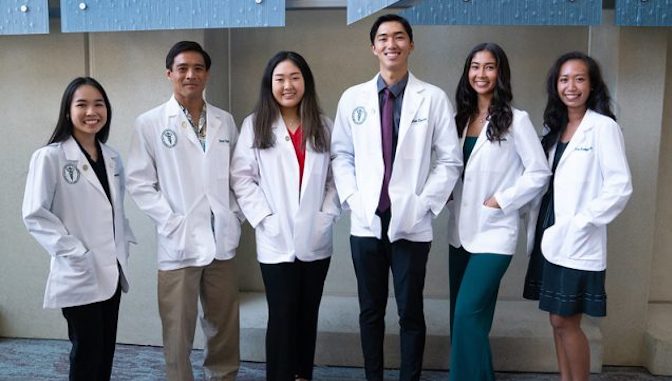
With the help of a $10-million grant from Dr. Priscilla Chan and Mark Zuckerberg the University of Hawaiʻi at Mānoa John A. Burns School of Medicine (JABSOM) is preparing to plant roots on the Garden Isle. A year ago, Dr. Priscilla Chan and Mark Zuckerberg helped launch a new training track for medical students on Kauaʻi, enabling JABSOM to expand education and health care and have a more prolonged and impactful presence there. The first cohort of students will begin their studies on Kauaʻi in March.
Related: First students start Kauaʻi medical training program, August 2022
There are two halves of a medical student’s journey. The first two years are devoted to classroom learning, while on-location clinical training makes up the second half.
“Historically, JABSOM has always had students centered in Oʻahu, and they do almost all their training here. There are some opportunities in the first year to go to Hawaiʻi Island, Kauaʻi or Lānaʻi,” said Travis Hong, the director of rural training at JABSOM. “In their third or fourth year, students can go to Kauaʻi, Maui or Hawaiʻi Island. That’s been the extent of student experiences on the neighbor islands.”
Planting roots
Each year, six students will learn and reside on Kauaʻi for the next five years. The first cohort includes Jaime Emoto, Erin Evangelista, Dylan Lawton, Kirra Borrello, Ivana Yoon and Brent Fujimoto.
“The Oʻahu curriculum in the medical school will be translated over to Kauaʻi. Lectures will be conducted virtually, but we’ll have an onsite physician doing the same Problem Based Learning tutorials and curricular activities with the students, so it’s really the same experience on Oʻahu,” Hong said.
When students enter their clinical years, they will treat patients on Kauaʻi.
“Students in their third year will spend at least six months on Kauaʻi, rotating through primary care, which includes pediatrics, internal medicine, family medicine, OBGYN, surgery and psychiatry,” he said. “This is what every JABSOM student does. This group will just do it on Kauaʻi.”
Electives and different specialties are reserved for medical students’ fourth year. JABSOM’s Kauaʻi Medical Training Track students will do two elective months, and two required months in emergency medicine and geriatrics on Kauaʻi.
Post-residency commitment on Kauaʻi
The Dr. Priscilla Chan and Mark Zuckerberg grant provides the medical training track students with a full, four-year scholarship to JABSOM, but it comes with a promise that ensures Kauaʻi residents will also reap the benefits of the grant.
Ultimately our goal is to have these students return to Kauaʻi and practice and start to do a small part in managing the physician shortage on the island.
—Travis Hong
“Work commitment,” Hong said. “Once they finish residency training, they must return to Kauaʻi for at least four years to practice as independent physicians. There’s no mandatory specialty they have to go into. We encourage primary care because that’s the greatest need for underserved areas.”
While primary care physicians are needed statewide, students are able to take a different route. Neighbor islands have a shortage of specialized doctors, and it’s common to have doctors on Oʻahu take monthly trips to neighbor islands to treat patients.
“If you look at it in broad strokes, every island is dealing with the same issues, but this program allows us to get students into the hospitals and clinics to see patients and shadow physicians early on,” Hong said. “Ultimately our goal is to have these students return to Kauaʻi and practice and start to do a small part in managing the physician shortage on the island.”

